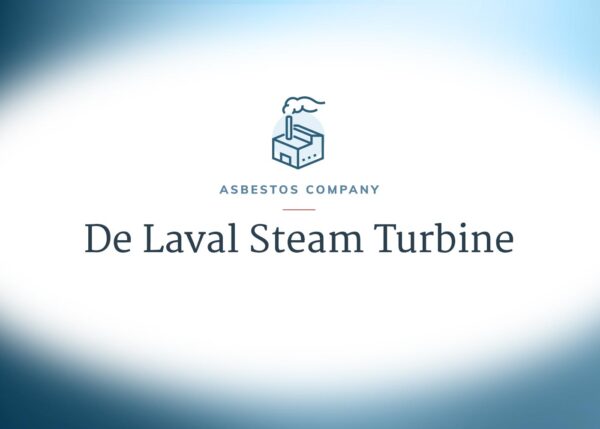01. History of Asbestos Use
De Laval Steam Turbine History of Asbestos Use
The first American De Laval Steam Turbine plant was opened in Trenton, New Jersey, in 1901. In December 1900, the company placed an ad in the paper for experienced mechanics for a plant opening in May. Soon after its opening, the plant was fully functional and producing turbines, pumps, gears, compressors and other high-speed equipment.
De Laval Steam Turbine was recognized as one of the top manufacturers of these materials and saw considerable growth during World War I. The company was one of the main suppliers of power-generating equipment for over 70 Navy vessels. While De Laval had to downsize following the war and through the Great Depression, the company saw a similar boost during World War II and once again expanded its operations.
Unfortunately, throughout this time of growth, the company was incorporating asbestos fibers into their pumps and other ship equipment. From the 1930s to the 1970s, asbestos use in the United States grew exponentially, particularly in industries that required products and goods that could sustain high heat, fire and chemical reactions. All of the products De Laval was producing faced high-heat environments, and the company relied on asbestos to make their goods reliable and durable.
Until the 1960s, product catalogs show that De Laval Steam Turbine continued to use asbestos in their production. The company hit hard financial times around this period, as demand for shipbuilding decreased significantly, and they looked for a partner to buy a 70% share. In 1964, Transamerica Corporation, an insurance company that was branching into other industries, acquired De Laval.
The company emerged from its financial difficulties, seeing a period of growth from the 1970s to the 1980s. In 1986, the company rebranded as Imo Industries and once again became an independent company. By 1992, however, Imo Industries was cited by the Environmental Protection Agency for hazardous waste at their old plants, especially in Washington. The company also began to face mounting legal claims from former employees facing asbestos diseases.
De Laval Steam Turbine continues to face asbestos claims today from the widespread impact of their past use of the toxin.
Resources for Mesothelioma Patients
02. Asbestos Products
De Laval Steam Turbine Asbestos Products
De Laval was part of an industry that was notorious for asbestos use. Steam turbines generate high temperatures, so using asbestos insulation on the parts was a way to control temperature and prevent fires.
Shipyards and shipbuilding also utilized large amounts of asbestos because of products from an array of manufacturers, including De Laval Steam Turbine. Reports estimate that some shipyards used upwards of 500,000 pounds of asbestos every month.
De Laval Steam Turbine products that may have contained asbestos or asbestos-containing parts include, but are not limited to:
- De Laval Main Feed Booster Pump
- Centrifugal pump packaging
03. Occupational Exposure
De Laval Steam Turbine and Occupational Exposure
De Laval employed more than 2,000 people in their various plants during their periods of growth. Workers from other companies also risked exposure when working with De Laval parts on ships and in shipyards. Because the company’s turbines were so popular for Naval vessels, particularly destroyers and carrier ships, thousands of Navy veterans also were exposed to asbestos during their time of service.
04. Asbestos Litigation
Asbestos Litigation Against De Laval Steam Turbine
By 1992, De Laval Steam Turbine was named as a defendant in 7,000 pending asbestos-related lawsuits and had already settled a number of claims in the years prior. Because of the asbestos litigation filtering in against them, the company could not overcome their financial difficulties and was acquired by II Acquisition Corporation in 1997.
Since its acquisition, De Laval is still frequently named in mesothelioma and asbestos lawsuits. The company purchased insurance worth $1.85 billion to cover its litigation expenses and defense costs for asbestos claims. In an insurance lawsuit brought forward by Imo Industries seeking better coverage, court documents showed that their insurance company, TIG Insurance Company, spent over $72 million on asbestos litigation between 1986 and 2014.
Prior to 1986, the document revealed Imo had spent around $33 million on such costs. The company relied on a number of insurance policies to help cover these costs. In 2003, insurance company Aetna noted paying over $15 million for these expenses and told Imo that the policy coverage was exhausted.
The company continues to face asbestos litigation today, facing costs of millions of dollars more to cover their defenses and the resulting payouts to asbestos victims. If you believe you or a loved one is entitled to compensation, learn how a mesothelioma lawyer can help.




